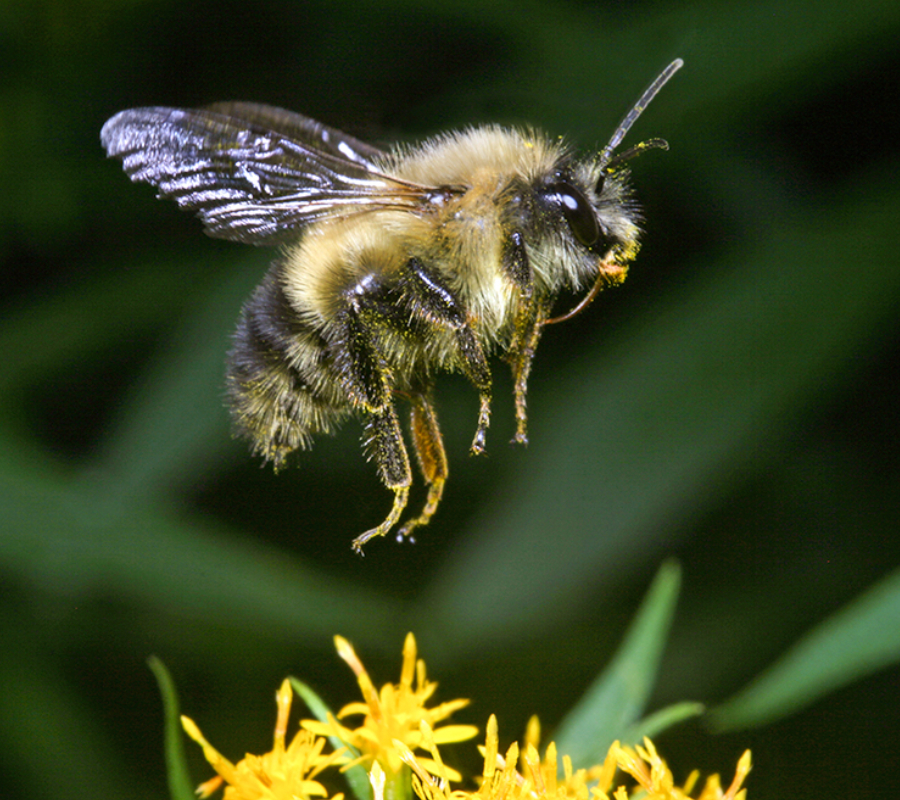Over the course of 10 years, a group of researchers engaged in what it seemed an impossible task: measuring all insects that migrate from Britain every year. The study found that 3.5 trillion insects travel through the U.K. each year, which represents a significant number regarding animal migration in general.
According to the study published in the journal Science, the team of investigators considered that there was already plenty of information concerning the migration phenomenon among vertebrates in a global scale. However, there was not, until now, a study that showed how was the behavior of invertebrates when the migrations seasons arrived.

Therefore, a group of researchers from the University of Exeter in Cornwall decided to measure the number of insects that traveled by the southern region of Britain over a 10-year period, only to find amazing discoveries. The count was made using a vertical radar and a net attached to a balloon filled with helium.
When adding the total amount of winged creatures that travel every year, the total weight is 3,200 tons, surpassing the added weight of birds that migrate every year from the U.K. to Africa. 3,200 tons of biomass is about the added weight of 800 large elephants, 7 times the total weight of the 30 million songbirds that fly over Britain every year and the mass of 20,000 flying reindeer.
The investigators observed the migration phenomenon that occurred at altitudes of 492 feet and 3,937 feet (150 to 1,200 meters) and analyzed all types of small, medium and large-sized insects. The scientist team didn’t study the direction and destination of the migration movements as they assumed that the insects simply traveled back and forth over the English Channel and the North Sea, which represents long distances of hundreds of miles.
The researchers explained that the number of insects measured could be higher than the presented in the study, as they estimate that the quantity of migrational animals of this kind must be about the same in most parts of the world.
Why are these results important?
The number of invertebrate animals surpasses the amount of vertebrates in the world, meaning that insect migrational movements are important when studying the environment and its status. The insects are a vital part of the ecosystem as they pollinate plantations, decompose and make the soil more productive, serve as food to several types of birds and mammals, and function as both crop pests and predators of crop pests.
According to the investigation team, the real effects of the insect mass “bioflow” has not been investigated deeply, unlike the effects of vertebrate animals migration that had been analyzed in the past. However, they recognize that the migrational movements of invertebrate animals have a direct impact on the ecosystem as they influence the predators’ behavior, vector nutrients, and energy.

When explaining the study, the research team said that this kind of animals is formed by 10 percent nitrogen and 1 percent phosphorus. This organical composition is vital when it comes to plant productivity, as the decomposition of the insects represents a significant source of nutrients.
“The 3,200 tons of biomass moving annually above our study region contains 100,000 kg (22046,23 lbs) of N and 10,000 kg of P. Such insect movements represent an underappreciated mechanism for redistributing nutrients and energy,” they wrote in the paper when talking about the importance that these migrational movements and insects themselves have regarding the ecosystem productivity.
The team of researchers was surprised when discovering that the smaller type of insects analyzed used to fly regardless the direction and didn’t have any established pattern. However, the medium and large-sized breeds used to have default travel routes depending on the seasonal status.
The co-author of the study, Dr. David Chapman of the University of Exeter, explained that insects have the ability to know the wind’s direction and decide if it is worth to travel in that direction at that particular moment.
“It signifies that the insects have a compass mechanism in order to know which is north and south, but they also have the capability to then fly up high into the sky and assess the direction of the wind and relate it to the compass direction and make a decision on whether to fly or not – that’s a quite complex set of things and many, many species are doing this,” Chapman explained when presenting the study to the Science Journal this Friday.
The study also found that the most important migrations occurred in spring toward the north and in autumn toward the south. The speed of the insects was also a big surprise for the investigators. Some types of invertebrate animals were able to travel up to 58 kilometers per hour and maintain that velocity through two hundred or three hundred kilometers (about 200 miles).
The research team explained that these discoveries might help on a better understanding of environmental changes. However, scientists must be very careful as insect migration is often influenced by the climatic change, Dr. Ka S Lim, from Rothamsted Research, warned regarding future investigations.
Source: Science Mag
